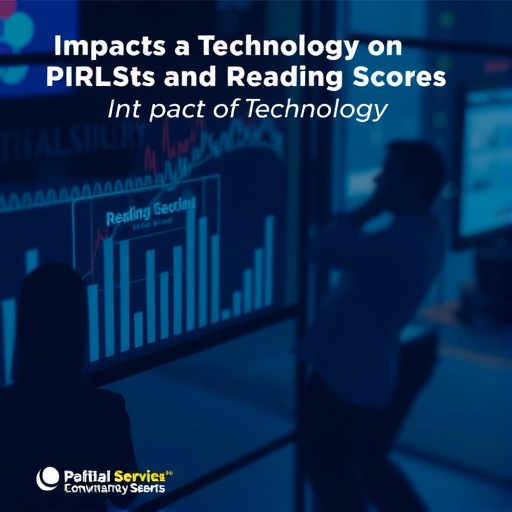In an era defined by rapid technological advancement and increasing digital interaction, an intriguing discourse has emerged regarding the differences in reading comprehension scores between paper and online formats. This issue is particularly salient in educational assessments, where methodologies could shape literacy skills for generations. The recent study conducted by Mirazchiyski and Gershteyn sheds light on this phenomenon, utilizing data from the Progress in International Reading Literacy Study (PIRLS) 2016. Their findings not only contribute to our understanding of reading formats but also present significant implications for educators and policymakers worldwide.
The PIRLS data are pivotal in offering insights into how children interact with various literary resources. With technological devices becoming ubiquitous in educational settings, it is pertinent to analyze how these platforms influence reading comprehension. Mirazchiyski and Gershteyn’s research underscores the necessity of understanding how readers engage with content across different mediums. While paper reading has long been considered a reliable standard, the advent of digital literature raises questions about potential differences in cognitive processing.
A defining aspect of the study focuses on the technology factors that may contribute to discrepancies in performance between traditional and electronic reading formats. The authors argue that user interface design, ease of navigation, and multitasking capabilities of digital devices can significantly impact comprehension levels. Students may find themselves distracted by notifications or the vast amount of information available online, which can divert their attention away from the texts they are meant to engage with. Consequently, this divergence in focus could lead to lower reading comprehension scores in digital formats.
Moreover, the study delves into the physical and environmental variables that differentiate reading experiences. Reading on paper allows for tactile engagement that many learners find beneficial; the ability to physically highlight or annotate text can enhance memory retention and understanding. In contrast, the digital reading environment may lack these sensory interactions, potentially hindering a learner’s ability to absorb content in a manner that feels natural and intuitive. Mirazchiyski and Gershteyn highlight the important role of these environmental and physical interactions in shaping reading outcomes.
Another critical angle addressed by the research team is the varying levels of access and experience with technology among students. In different educational contexts, students may possess divergent levels of familiarity with digital platforms. This variation can create a disparity in how effectively they glean information from online texts. Students who are less adept at navigating digital environments may experience increased cognitive load, leading to comprehension challenges that do not arise in traditional reading scenarios. Thus, the authors argue for a more nuanced understanding of technology integration within educational frameworks.
The implications extend beyond mere comparisons of scores; they touch upon pedagogical approaches employed by educators. A key takeaway from the study is the urgent need for training and resources that equip teachers to guide students in both reading environments. Educational curricula must adapt to reflect the dual demands of digital literacy while preserving the fundamental skills associated with traditional reading practices. Teachers can play a pivotal role in bridging the gap, ensuring students develop proficiency in navigating both paper and digital texts.
Through their exploration, Mirazchiyski and Gershteyn also encourage further research into the cognitive processes involved in reading across formats. They pose the question: Are the skills developed in one medium transferable to another? This inquiry is especially relevant as educational institutions continue to integrate technology into literacy programs. Understanding how various reading formats affect cognitive processing can lead to more tailored educational strategies that recognize the unique demands of each medium.
Moreover, the study prompts a reevaluation of assessment metrics currently in use. As standardized tests increasingly incorporate digital components, there is a pressing need for assessments that accurately reflect a student’s skill level across both media. As the educational landscape evolves, the reliance on traditional benchmarks may inadvertently disadvantage learners who excel in digital environments or struggle with paper-based assessments. Adapting assessment strategies to encompass a diverse range of reading experiences is critical for fair evaluation.
In conclusion, the findings presented in the research by Mirazchiyski and Gershteyn illuminate a complex and multifaceted issue within literacy education. The differences in scores between paper and online reading underscore the urgent necessity for comprehensive strategies that embrace both physical and digital literature. As educators and policymakers grapple with these shifting paradigms, prioritizing a dual approach to reading instruction promises to foster better literacy outcomes for students.
As we advance, embracing this duality will be paramount in shaping a future where all students can thrive as proficient readers, regardless of the medium presented to them.
Subject of Research: Differences in paper and online reading comprehension scores among students.
Article Title: Technology factors related to the differences in paper and online reading scores in PIRLS 2016.
Article References:
Mirazchiyski, P.V., Gershteyn, V. Technology factors related to the differences in paper and online reading scores in PIRLS 2016.
Large-scale Assess Educ 12, 33 (2024). https://doi.org/10.1186/s40536-024-00224-9
Image Credits: AI Generated
DOI: https://doi.org/10.1186/s40536-024-00224-9
Keywords: reading comprehension, paper vs. online reading, technology in education, literacy, PIRLS 2016.




